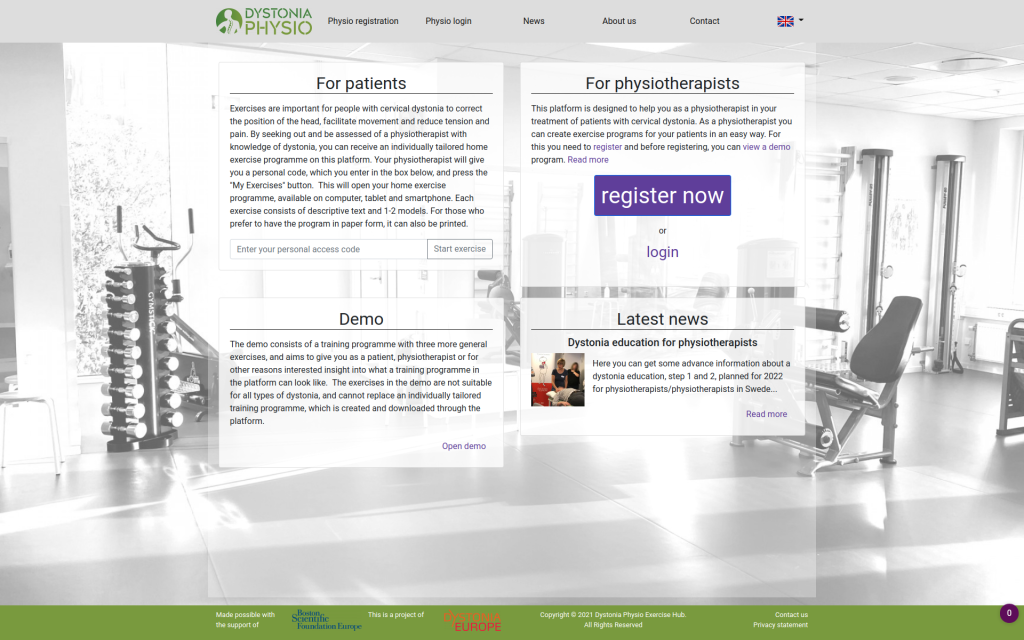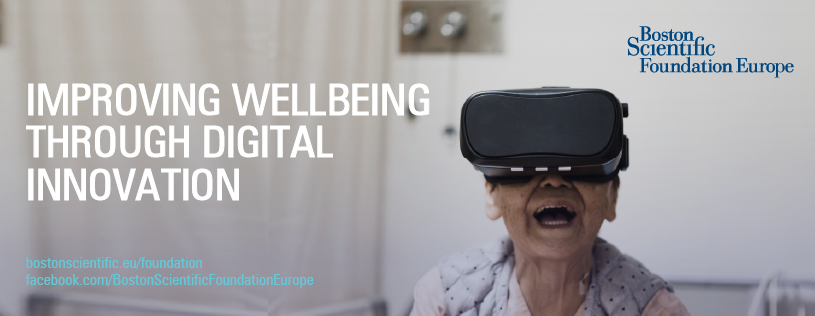Research has shown that Botulinum toxin injections (BoNT-inj) combined with physiotherapy provide good benefit for most people with cervical dystonia (CD). Advanced treatment with Deep Brain Stimulation (DBS) also requires physiotherapy. Repetition of exercises is important to influence brain remodelling and achieve long-term improvements. Exercises should be individualised according to the pattern, nature and problem areas of dystonia. CD can manifest itself in a wide variety of individual patterns, switch in intensity depending on position, and respond negatively or positively to arm movements.
Therefore, the physiotherapist needs to have access to a large number of exercises, with the ability to make an appropriate selection for the individual patient, formatted into an exercise programme. With this as a basis and the pandemic’s increased focus on digital solutions, I came up with the idea of a digital platform
containing a large exercise bank for cervical dystonia. The platform is being developed in close collaboration with Dystonia Europe (DE) and its IT expert Eelco Uytterhoeven. DE manages the platform and I am the project owner. The Boston Scientific Foundation Europe (BSFE) has endorsed our application for funding for this project, enabling us to move from idea to reality. All the exercises on the platform will be available via a login code to physiotherapists, who can use simple filter functions to select exercises for a home exercise programme for their patient with CD. The programme will be visible to each patient digitally on the public page through a personal code. For those who are not comfortable with the digital, there is also the possibility to print the programme.
The exercises are provided with 3D models, but in a later phase, animation will also be added. Initially, the platform is in Swedish for physiotherapists and patients in Sweden, and is expected to be available in the near future. In about a year, launch in Europe in several languages is planned. To this end, we have also involved Jean-Pierre Bleton, an internationally renowned French physiotherapist in the field of dystonia, who has laid the foundations for much of the physiotherapy that is currently practised for patients with CD. The platform is also being built with the possibility to extend it to other neurological diagnoses in the future.

At the start-up, I alone have created all the exercises, but over time I may invite others with specific dystonia expertise, to have the opportunity to add new exercises. The platform is easy to use at all stages. The public part, where the patient downloads their program, works on computers, tablets and smartphones, while computers are recommended for working on the closed side. It should be emphasized that the platform does not replace a physiotherapist contact, but relies on the presence of a physiotherapist who makes an analysis of the dystonia and can thus also shape an individualised home exercise programme.

However, the platform makes it easier for the physiotherapist to select appropriate exercises, to communicate them and for the patient to take responsibility for his or her own training.
The platform is not a commercial activity and will be free of charge for both users and healthcare.
Together with DE, I sincerely hope that this platform, the Dystonia Physio Exercise Hub, will be of great benefit to every person with CD who wants to be involved in influencing their dystonia in the right direction.
With hopeful greetings Johanna Blom
Physiotherapist, Neurology department, University Hospital of Skåne, Malmö, Sweden

